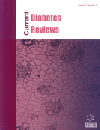
Full text loading...
We use cookies to track usage and preferences.I Understand
Diabetes is a chronic medical condition that causes high glycaemic levels, leading to damage to vital organs over time. It is a common disease worldwide, affecting around 422 million individuals living in middle- and low-income countries, which make up most of the population. Unfortunately, diabetes results in 1.5 million deaths annually. Diabetic patients are at a higher risk for developing cardiovascular conditions. Diabetic heart disease constitutes multiple genres, including diabetic cardiomyopathy, coronary artery disease, and heart failure. Hypoglycaemic agents aim to prevent these metabolic issues however some of these are cardiotoxic in nature. In contrast, other hypoglycaemic agents work beyond controlling glycaemic levels with their cardioprotective properties. Given that there is an alarming increase in diabetic heart disease cases universally, we have attempted to review the existing data on the topic and the effects of hypoglycaemic drugs on heart diseases.

Article metrics loading...

Full text loading...
References


Data & Media loading...

